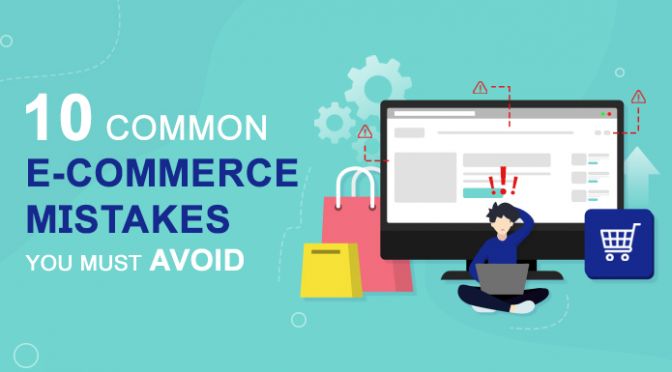The eCommerce industry is booming, but with this growth comes fierce competition. To stand out and succeed, you must avoid costly mistakes that can lead to lost sales and unhappy customers. While mistakes can be valuable learning opportunities, it’s far better to avoid them altogether—especially when even a minor misstep can send your customers straight to your competitors.
Whether you’re planning to launch an eCommerce site or already have one, steering clear of these common pitfalls can help you build a successful online business and boost your sales.
1. Not Using the Right Website Theme
Your website’s theme is the face of your brand—it impacts the look, feel, and usability of your online store. A poorly chosen theme can confuse customers, degrade user experience, and hurt your brand’s credibility.
How to Avoid This Mistake:
- Be clear on your business goals: Choose a theme specifically designed for eCommerce.
- Opt for customization: Avoid relying solely on templates; add original elements to make your site stand out.
- Choose a responsive theme: Ensure your site adjusts seamlessly across all devices, from desktops to smartphones.
2. Insufficient Product Descriptions
Pictures can say a lot, but they don’t tell the whole story. Missing or minimal product descriptions leave customers guessing about important details like size, material, and functionality.
How to Fix This:
- Write detailed descriptions that address every potential question.
- Include specifics about size, materials, functionality, and warranty.
- Highlight unique selling points and provide care instructions if applicable.
A comprehensive product description builds trust and minimizes the chances of returns or dissatisfied customers.
3. Low-Quality Product Images
Online shopping lacks the tactile experience of physical stores, making product images essential for building customer confidence. Poor-quality or insufficient images can deter buyers from making a purchase.
Best Practices:
- Use high-quality images with zoom-in capabilities.
- Show multiple angles and variations (e.g., colors, sizes).
- Include lifestyle shots to help customers visualize the product in use.
Investing in professional photography can significantly improve conversion rates.
4. Complicated and Lengthy Checkout Process
The checkout process is where potential buyers become paying customers. A convoluted or time-consuming checkout is a leading cause of cart abandonment.
Streamline Your Checkout Process:
- Allow guest checkout to reduce friction.
- Eliminate unnecessary steps and form fields.
- Offer clear information on shipping costs and delivery timelines upfront.
- Simplify the process to one or two pages for better user experience.
5. Limited Payment Options
Today’s shoppers use a variety of payment methods, and limiting their choices can drive them to competitors.
Expand Your Payment Methods:
- Research your target audience’s preferred payment methods.
- Include popular options like credit/debit cards, mobile payments, PayPal, and even installment plans.
- Stay updated with new payment trends to cater to broader audiences.
6. Lack of Shipping Options
Not all customers have the same delivery preferences. Some prioritize speed, while others prefer cost-effective options.
Enhance Your Shipping Strategy:
- Offer multiple shipping options, including expedited and free shipping.
- Be transparent about shipping costs before checkout.
- Provide estimated delivery times to manage customer expectations.
7. Not Offering Free Shipping
Free shipping is a powerful incentive for online shoppers. High shipping costs are one of the main reasons for cart abandonment.
How to Leverage Free Shipping:
- Offer free shipping for orders above a certain threshold.
- Highlight free shipping prominently on your website to attract buyers.
- Absorb shipping costs into product pricing if feasible.
8. Hiding Return and Exchange Policies
Transparency is crucial in building trust. Ambiguity about return and exchange policies can deter buyers and damage your reputation.
Be Transparent:
- Clearly display your return and exchange policies on your site.
- Use simple language to explain terms and conditions.
- Offer flexible return options to increase customer satisfaction.
9. Neglecting Customer Reviews
Customer reviews are a vital tool for building credibility and trust. Ignoring or failing to gather reviews can cost you conversions.
Earn and Showcase Reviews:
- Encourage reviews by following up with customers after purchase.
- Offer incentives like discounts or vouchers for leaving honest feedback.
- Display reviews prominently on product pages to reassure potential buyers.
10. Poor Customer Service
Exceptional customer service is the backbone of any successful eCommerce business. Neglecting customer support can result in lost sales and a tarnished reputation.
Deliver Outstanding Support:
- Respond to inquiries promptly and professionally.
- Provide multiple support channels (email, live chat, phone).
- Train your team to handle complaints with patience and empathy.
- Use customer feedback to improve your services continually.
Final Thoughts: Avoid Mistakes, Maximize Growth
Mistakes in eCommerce can be costly, but with awareness and proactive measures, they’re entirely avoidable. Start by evaluating your website and addressing the areas mentioned above. Whether it’s improving your product descriptions, enhancing your checkout process, or expanding shipping options, small changes can make a big difference.
If you’ve already made these mistakes, it’s not too late to fix them. By addressing these issues now, you can rebuild customer trust, improve user experience, and ultimately increase your sales. Success in the competitive eCommerce space is all about staying customer-focused and continuously refining your processes.
Remember, your eCommerce site isn’t just a storefront—it’s a gateway to building lasting relationships with your customers. Make it count!

